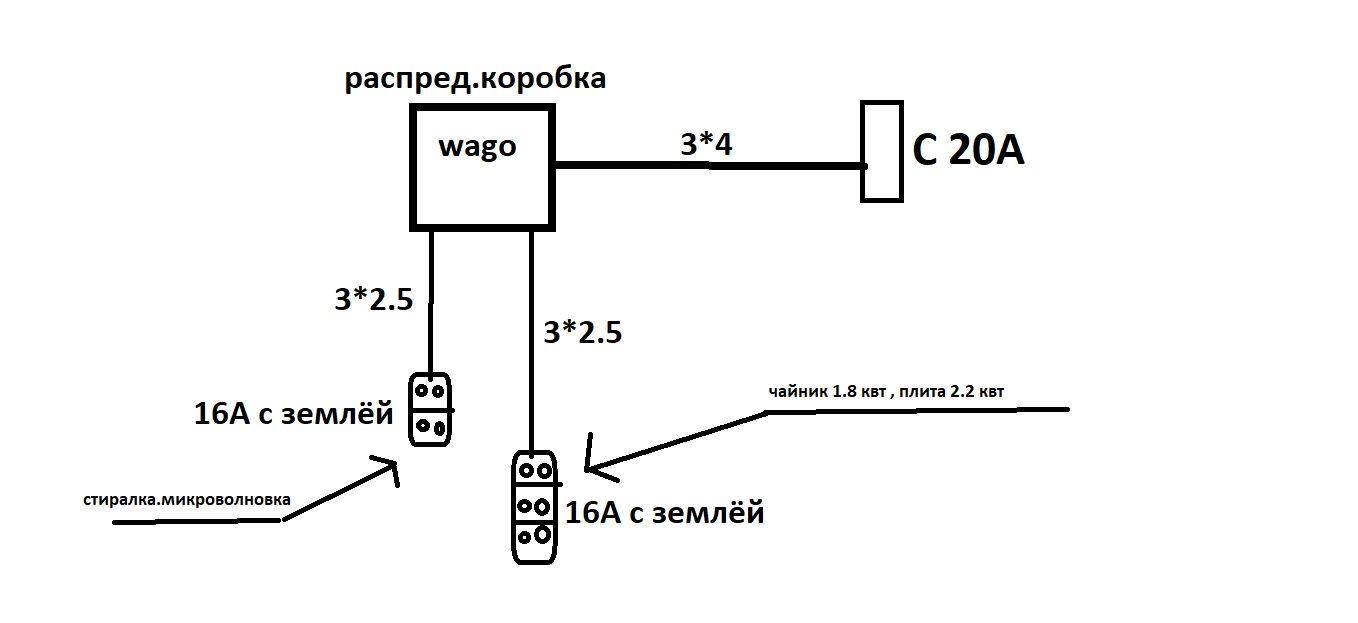Drawing up a wiring diagram in the kitchen
Good afternoon. I’m going to conduct a separate wiring to a small kitchen, the related “materials” were bought for this, under the advice of sellers in an electrical goods store. I will try to explain briefly and attach a sketch.
There is a Schneider C20A machine, a 3 * 4 copper cable is going to go from it to the junction box (70 * 70). In the junction box, this cable will be disconnected by Vago terminals, which have sockets for 5 wires (terminals with latches). Next, the switch will go in two lines from the distribution box, each 3 * 2.5 (copper). One line will go to a dual 16A open outlet (with ground), a washing machine and a microwave will be connected to it. A triple socket at 16A (with ground), also open, will be connected to the second line. A 1.8 kW kettle will be connected to it, a single-burner induction cooker at 2.2 kW. Other devices at the same time do not turn on and are used from time to time, and are connected individually. And even those appliances that I intend to constantly use at the same time, are used only up to two kitchen appliances.
So the question is, based on the sketch and the written, something needs to be replaced or purchased? Or, in principle, can you use it like that?




Hello. If you want to mount reliable electrical wiring, it is better to draw separate electrical wiring lines to powerful electrical appliances. If you still decide to branch one line into several in the junction box, then it is better to give preference to a more reliable method of contact connection - soldering, welding or crimping.
As for the number of outlets. With the simultaneous operation of the washing machine and microwave, the current can be more than 16 A - that is, here you need two separate sockets. The same kettle + stove is already overload, an ordinary 16 A household outlet can be damaged quickly while operating these electrical appliances, not to mention the inclusion of a third electrical appliance. Here, you also need separate sockets.
You have a 20 A circuit breaker in the dashboard, which means that in the event of an overload on one of the outlets, this outlet will be damaged, as ordinary household outlets are rated for 16 A.
Also, you do not take into account the fact that you need to install a separate RCD on the washing machine and electric stove. That is, you must have a separate line with a machine and an RCD for the washing machine and a separate line with a machine and an RCD for the electric stove.
If you still want to install a double or triple outlet on several electrical appliances, then a more reliable option is to install two or three single outlets next to each other, each of which is designed for 16 A.